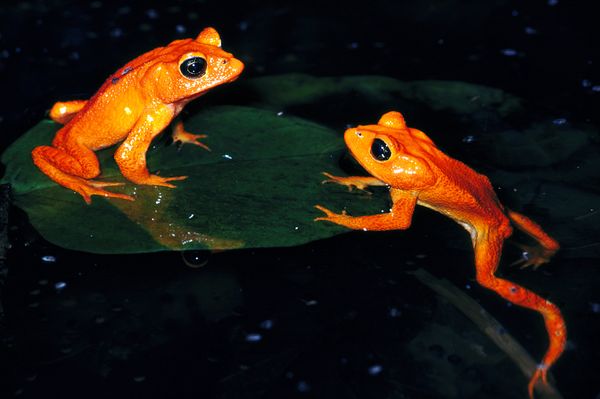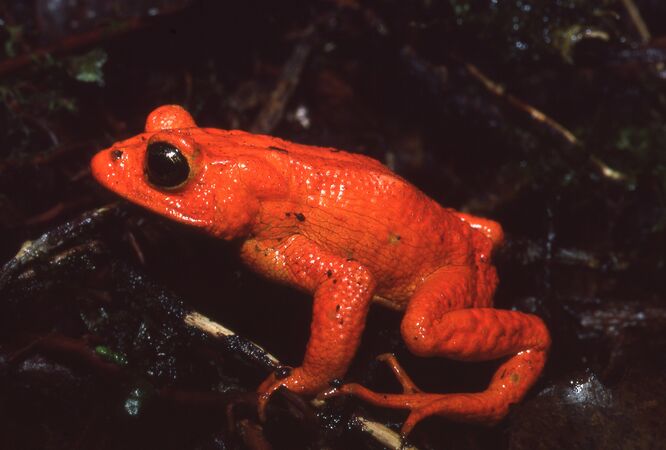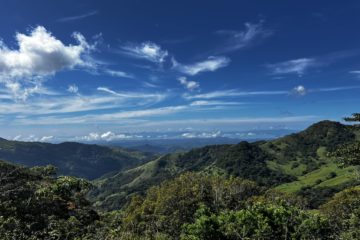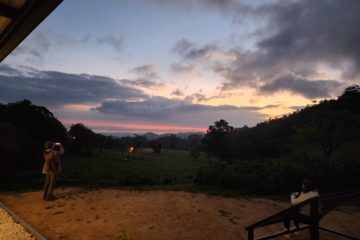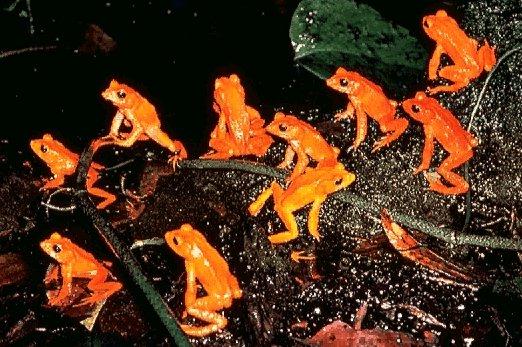
The Tragic Tale of Monteverde’s Golden Toad: A Climate Change Victim
The captivating story of Monteverde’s Golden Toad, first discovered by herpetologist Jay Savage in 1964, is now a tragic tale echoing the consequences of climate change. Once thriving in the Costa Rican jungle, the golden toad’s population dramatically declined from over 1500 adults in 1987 to a mere 10-11 in 1988, with the last recorded sighting on May 15, 1989. This iconic amphibian, scientifically known as Bufo periglenes, played a vital role in the ecosystem of Monteverde until its disappearance more than three decades ago.
Description:
The vibrant males, with their bright orange and golden hues, and the varied females, displaying shades from dark to pale olive with red spots and yellow edges, made the golden toad a spectacle for nature lovers and scientists. Juveniles presented a challenge in sex determination due to their identical appearance. The Monteverde Biological Reserve in Costa Rica, once witness to the annual emergence of these tiny, shiny-skinned batrachians after the dry season, now stands as a poignant reminder of their extinction.
Climate Change Impact:
The UN reports now cite the golden toad’s extinction as an alarming example of the repercussions of climate change. Alan Pounds, an ecologist at the Monteverde Biological Reserve, emphasizes that climate change exacerbated the El Niño phenomenon, leading to the disappearance of the Costa Rican toad. He argues that while the deadly Chytrid Fungus acted as the disease, climate change served as the trigger, ultimately causing a 99% population loss within a year.
Comparisons:
Drawing attention to a “cousin” of the golden toad, the Panamanian golden frog (Atelopus zeteki), critically endangered due to a fungus, further highlights the broader impact of environmental changes. The latest IPCC report explicitly identifies the Costa Rican toad as a victim of climate change, emphasizing the urgent need for global conservation efforts.
Conservation and Future Threats:
The disappearance of not only the golden toad but also the Harlequin frog, another Monteverde reserve endemic, underscores the severity of the threat posed by climate change. With approximately 12,000 species at risk, of which 6,000 face extinction, the international community’s commitment to protect at least 30% of land and oceans by 2030 becomes crucial. Monteverde, facing irregular rainfall and a 70% reduction in humidity over the past 50 years, stands as a poignant example of the evolving challenges posed by climate change.
Conclusion:
As the world grapples with the profound impact of climate change on biodiversity, the tragic tale of Monteverde’s Golden Toad serves as a poignant reminder of the urgency to address environmental threats. The global community’s commitment to protecting crucial ecosystems is not only an investment in the preservation of unique species but also a pledge to safeguard the delicate balance of our planet’s diverse and interconnected ecosystems.
